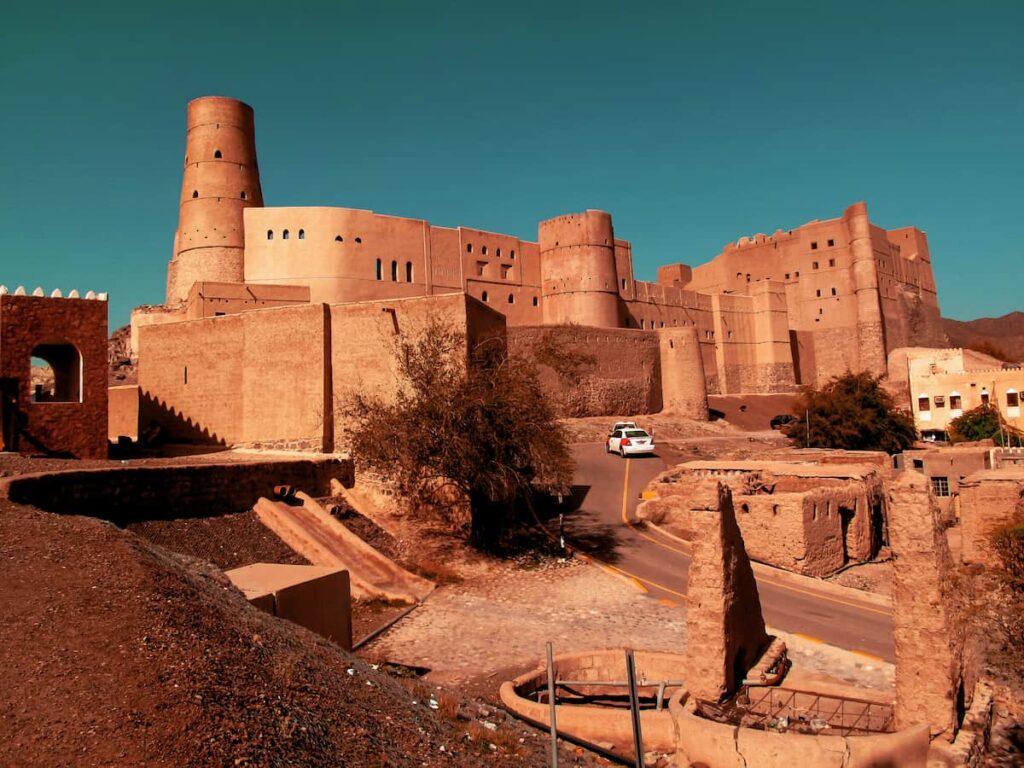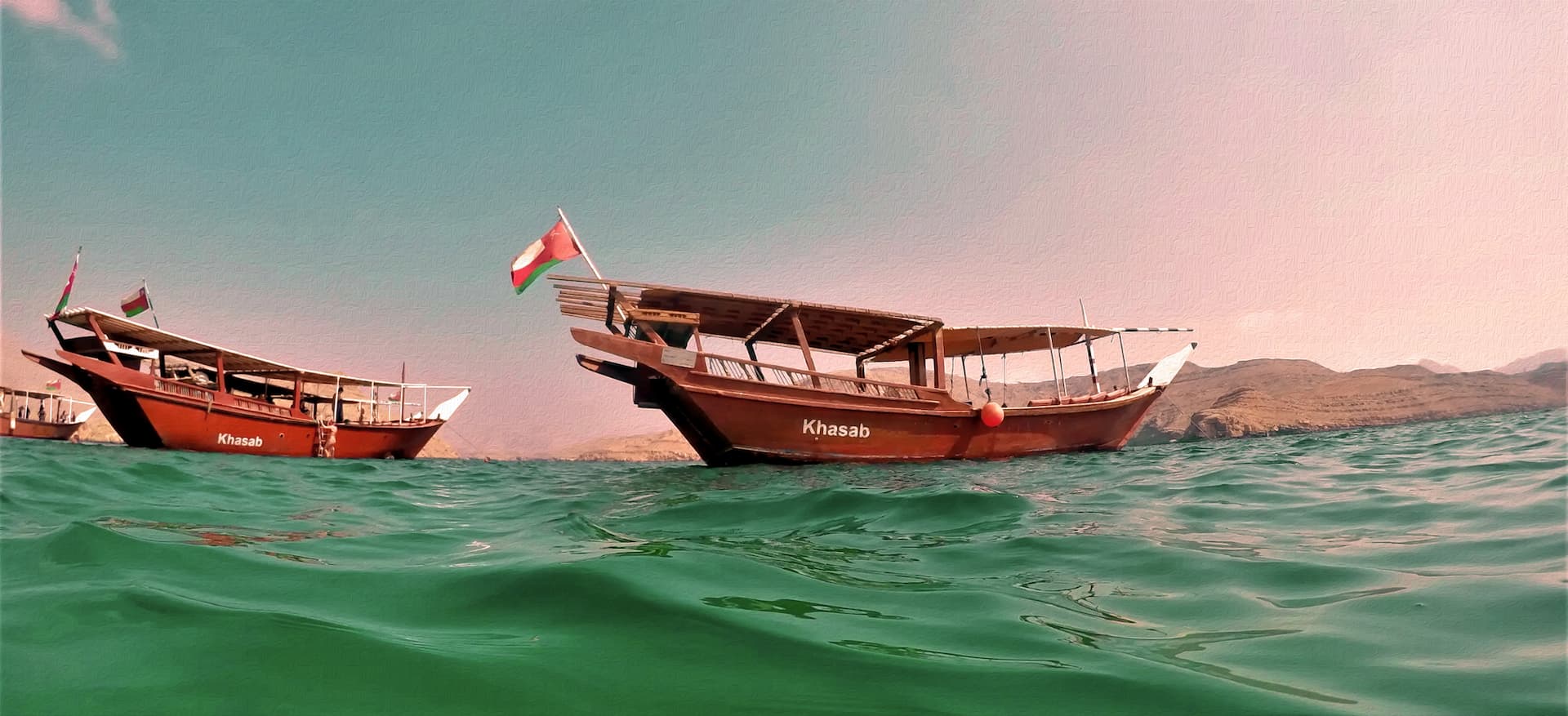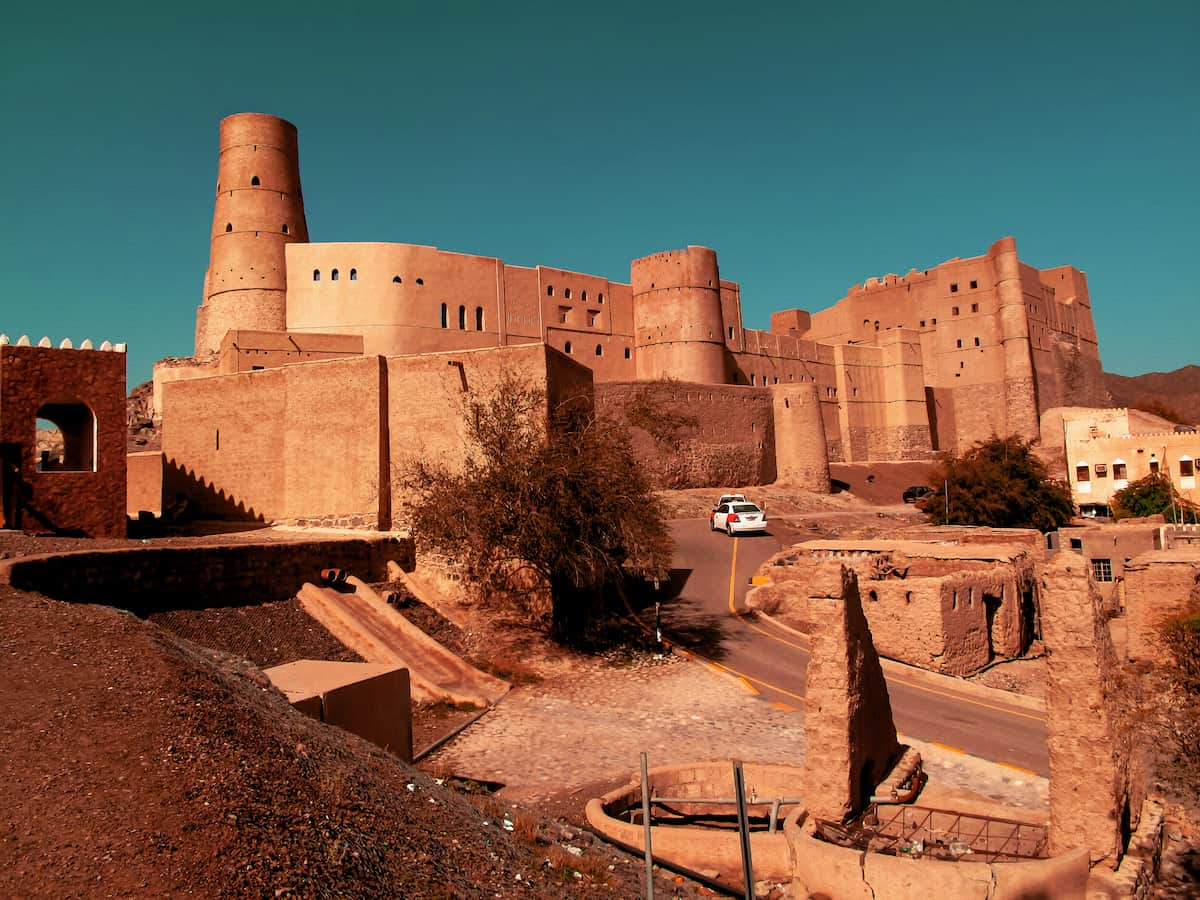Oman’s Iconic Forts
Oman, a land of enchanting landscapes and rich traditions, is also home to a treasure trove of historical forts that offer a glimpse into its storied past. Scattered across the country, these architectural marvels stand as a testament to Oman’s strategic importance in trade and its commitment to protecting its lands. For history enthusiasts, culture lovers, and adventure seekers, visiting Oman’s forts is an essential part of any travel itinerary.
Whether perched atop rocky hills, nestled in bustling towns, or overlooking serene oases, Oman’s forts tell tales of resilience, ingenuity, and heritage. Here’s a guide to some of the must-visit forts in Oman, each offering a unique window into the country’s history.
Nizwa Fort: A Jewel of Omani Heritage
One of Oman’s most famous and frequently visited forts, Nizwa Fort is a masterpiece of Omani architecture and a symbol of the nation’s rich cultural legacy. Built-in the 17th century by Imam Sultan bin Saif Al Yarubi, this iconic structure served as a military stronghold to protect the city of Nizwa, once the capital of Oman.
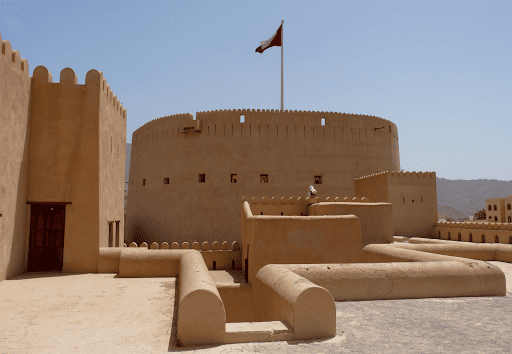
The fort’s most striking feature is its massive cylindrical tower, which offers panoramic views of the surrounding mountains and palm groves. Inside, visitors can explore the fort’s many rooms, passageways, and exhibits showcasing traditional weaponry, tools, and artifacts. The Nizwa Souq, located nearby, adds to the experience, allowing tourists to shop for local crafts, silver jewelry, and spices after their visit.
For travelers, Nizwa Fort is a must-see destination that combines historical intrigue with breathtaking scenery.
Bahla Fort: A UNESCO World Heritage Site
Listed as a UNESCO World Heritage Site, Bahla Fort is one of the oldest and most significant forts in Oman. This sprawling structure, built by the Bani Nabhan tribe in the 13th and 14th centuries, reflects the ingenuity of early Omani builders. Its mud-brick walls, defensive towers, and intricate architectural details are a testament to the skills of the craftsmen who constructed it.
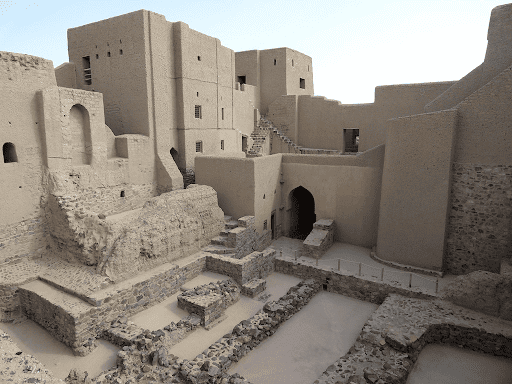
The fort is located in Bahla, a town renowned for its traditional pottery and its role as a center of Islamic scholarship. Visitors can walk along the fort’s walls, explore its courtyards, and learn about its historical significance as a center of power and trade.
Bahla Fort’s impressive size and location against the Jebel Akhdar mountains backdrop make it a fascinating destination for anyone interested in history and culture.
Jabrin Castle: A Testament to Omani Art and Education
Unlike many of Oman’s other defensive forts, Jabrin Castle was built with a focus on art, education, and scholarship. Constructed in the late 17th century during the rule of Imam Bil’arab bin Sultan Al Yarubi, this elegant castle served as a residence and a center for learning.
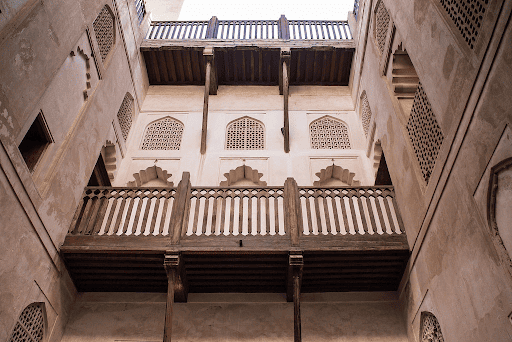
Jabrin Castle is renowned for its exquisite architectural details, including painted ceilings, intricately carved wooden doors, and beautifully decorated windows. The castle’s layout features lecture halls, prayer rooms, and living quarters, offering a glimpse into the intellectual and cultural pursuits of its time.
For tourists, Jabrin Castle is a must-visit site that showcases the artistic and intellectual achievements of Oman’s golden age.
Al Jalali and Al Mirani Forts: Guardians of Muscat
Overlooking the harbor of Oman’s capital city, Al Jalali and Al Mirani Forts are twin fortresses that have stood as guardians of Muscat for centuries. These forts were built in the 16th century during the Portuguese occupation of Oman and were later enhanced by Omani rulers.
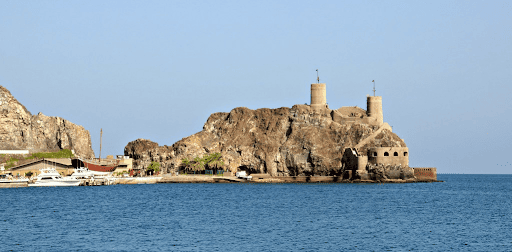
While the forts are not open to the public, their dramatic locations on rocky cliffs and their historical significance make them a key attraction for visitors to Muscat. Tourists can admire the forts from the harbor or nearby viewpoints, such as the Corniche.
For those exploring Muscat, a visit to Al Jalali and Al Mirani Forts provides a deeper understanding of the city’s maritime history and its role as a gateway to Oman.
Nakhal Fort: A Fortress with Stunning Views
Nestled at the base of the Hajar Mountains, Nakhal Fort is one of Oman’s most picturesque and well-preserved forts. Originally built in pre-Islamic times and later expanded by Omani rulers, the fort is strategically located to protect nearby villages and date plantations.
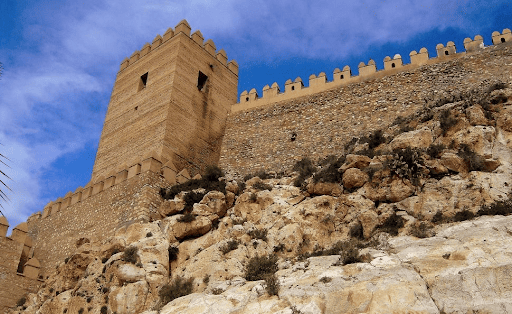
Nakhal Fort is known for its dramatic setting, with its towers and battlements offering sweeping views of the surrounding landscape. Inside, visitors can explore a variety of rooms, including living quarters, kitchens, and a mosque, all restored to reflect traditional Omani life.
Nearby, the Al Thowarah Hot Springs provides an opportunity for relaxation, making Nakhal Fort a perfect destination for a day trip that combines history and nature.
Rustaq Fort: A Symbol of Strength and Resilience
Rustaq Fort, one of Oman’s largest and oldest forts, is a testament to the nation’s defensive prowess and architectural ingenuity. Originally built in the pre-Islamic era, the fort was expanded and reinforced over the centuries, becoming a key military and administrative center.
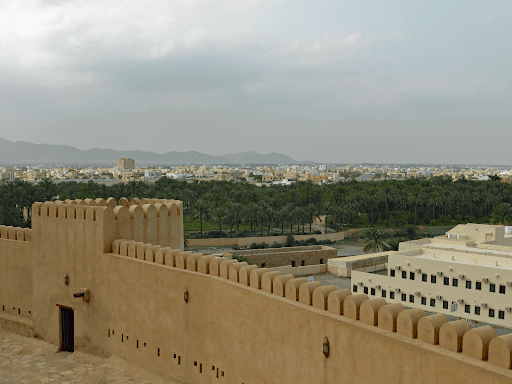
Located in the historic town of Rustaq, the fort features impressive watchtowers, secret passages, and deep wells. Visitors can explore its many levels and learn about its role in protecting the surrounding region from invasions.Rustaq Fort’s proximity to the Al Hazm Castle and the Al Ayn Hot Springs makes it an ideal destination for travelers seeking a blend of history and natural beauty.
Tips for Visiting Oman’s Forts
To make the most of your visit to Oman’s forts, keep these tips in mind:
- Plan Ahead: Check the opening hours and entry fees for each fort, as these can vary.
- Dress Comfortably: Wear lightweight clothing and sturdy shoes, as you may need to climb stairs or walk on uneven surfaces.
- Bring a Guidebook or Hire a Guide: Learning about the history and significance of each fort will enhance your experience.
- Visit Early: Arriving early in the day allows you to explore in cooler temperatures and avoid crowds.
- Combine Fort Visits with Nearby Attractions: Many forts are located near other points of interest, such as markets, hot springs, or scenic landscapes.
A Journey Through Oman’s History
Oman’s forts are more than just historical structures—they are living monuments to the country’s rich past and its enduring spirit. Each fort has a unique story to tell, offering travelers a deeper connection to Omani culture and heritage.
Whether you’re exploring the grand halls of Nizwa Fort, marveling at the artistry of Jabrin Castle, or taking in the breathtaking views from Nakhal Fort, these sites promise an unforgettable journey through time. For tourists seeking an authentic experience, Oman’s forts are not to be missed.



